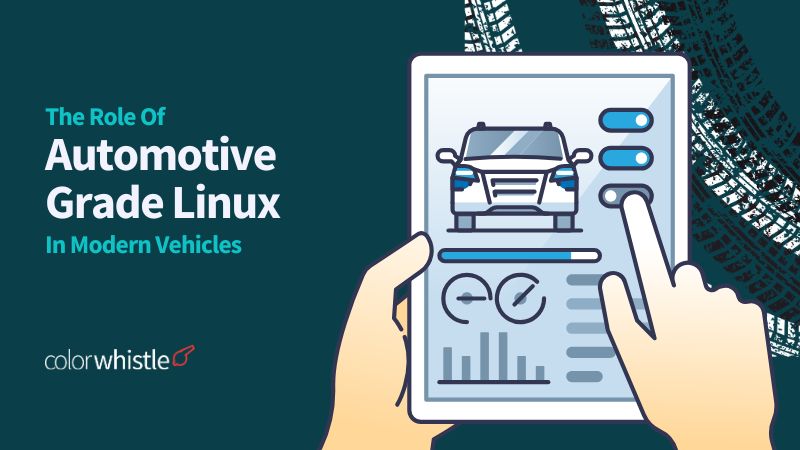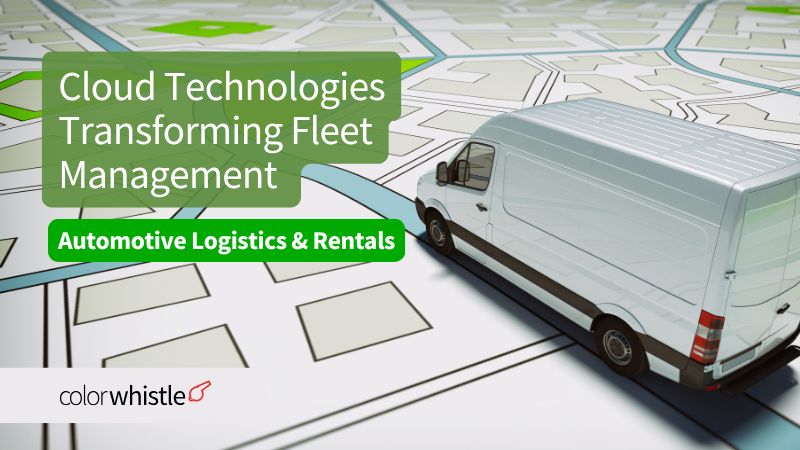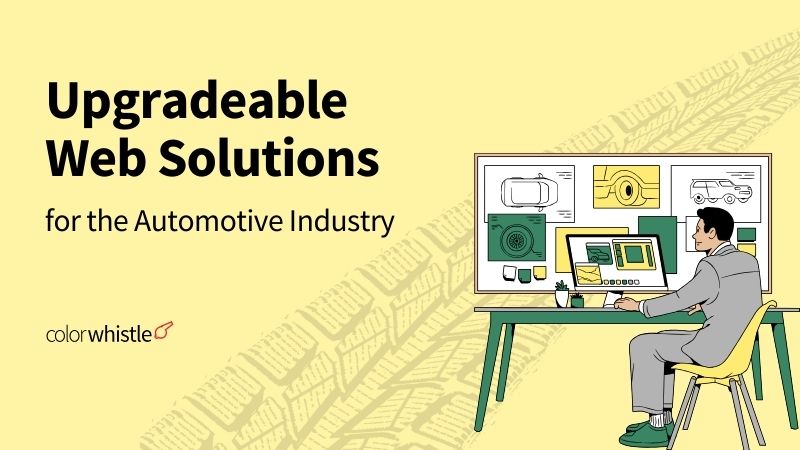Automotive Grade Linux (AGL) is at the forefront of a revolution in the automotive sector, presenting an open-source platform that promotes collaboration among car manufacturers, suppliers, and technology enterprises. As vehicles become more interconnected, the demand for innovative software solutions escalates. AGL satisfies this requirement by offering a streamlined software stack that improves functionality and elevates the user experience across various automotive applications.
Furthermore, the addition of web app development services to this ecosystem allows for the efficient deployment of applications that can significantly enhance vehicle performance and strengthen customer engagement.
This blog explores the role of Automotive Grade Linux in modern vehicles, discussing its impact on the automotive industry and how it enhances vehicle functionality and user experience.
What is Automotive Grade Linux?
Automotive Grade Linux (AGL) represents an open-source initiative directed by the Linux Foundation, to develop a unified software platform for connected vehicles. This project collaborates with automakers, suppliers, and technology companies to establish a common framework for diverse automotive applications, including infotainment, telematics, and advanced driver assistance systems (ADAS). AGL emphasizes collaboration and code reuse, thereby accelerating innovation and the rollout of new features within the automotive industry.
Did You Know?
As of September 2024, Statcounter reports that the desktop market share of Linux stands at 4.55%.
Also Read
Key Features of Automotive Grade Linux
Open-Source Platform
AGL is completely open-source, which enables developers to access, modify, and share the source code freely. This level of transparency encourages collaboration and innovation within the automotive industry, permitting companies to enhance one another’s contributions without the limitations imposed by proprietary software. Furthermore, the open-source framework significantly lowers the expenses related to software licensing, thereby increasing accessibility for automakers and suppliers.
Unified Code Base
AGL delivers a consolidated code base that is a common platform for numerous automotive applications, including infotainment systems, instrument clusters, and advanced driver assistance systems (ADAS). This approach minimizes fragmentation in the industry, allowing manufacturers to leverage code across various vehicle models and brands. As a result, it shortens development timelines and enhances the interoperability of different systems.
Scalability
The AGL platform is engineered for exceptional scalability, capable of supporting a diverse array of vehicle types, from basic models to premium luxury automobiles. This inherent scalability allows manufacturers to integrate advanced features without facing hardware limitations. As technological advancements occur, AGL is positioned to evolve, accommodating new functionalities and specifications necessary for various vehicle categories.
Modular Architecture
AGL features a modular architecture that allows developers to personalize and extend the platform by distinct needs. This level of flexibility permits manufacturers to integrate new technologies and features smoothly while upholding fundamental functionalities. Moreover, the modular design enhances the ease of updates and maintenance, as changes to individual components can be made without impacting the entire system.
Over-the-Air (OTA) Updates
One of the prominent characteristics of AGL is its capability to facilitate over-the-air (OTA) updates. This feature enables automotive manufacturers to remotely deliver software updates, ensuring that vehicles receive the latest security enhancements and functional upgrades without necessitating physical recalls.OTA updates significantly enhance customer satisfaction by reducing inconvenience and ensuring that vehicles are equipped with the latest technological advancements.
Enhanced Security
AGL leverages the strong security capabilities that Linux offers, establishing a secure base for automotive applications. Ongoing support from the open-source community plays a vital role in swiftly identifying and mitigating security vulnerabilities. This forward-thinking security strategy is essential in a time when connected vehicles face growing cyber threats.
Interoperability
AGL enhances interoperability by standardizing the software stack utilized across various vehicle models and brands. This approach simplifies the integration of third-party applications and services, thereby enriching the connected car ecosystem. By facilitating effective communication among different systems, AGL provides a more harmonious user experience for both drivers and passengers.
Rich Development Ecosystem
AGL promotes a lively ecosystem of developers, suppliers, and technology enterprises that collaborate on automotive software solutions. This cooperative setting accelerates innovation by harnessing the knowledge and resources of diverse participants within the industry. With the involvement of more companies, AGL continues to progress rapidly, adopting state-of-the-art technologies and features.
Also Read
Use Cases of Automotive Grade Linux
AGL has been successfully implemented in various automotive applications:
- In-Vehicle Infotainment (IVI): AGL offers an extensive framework for the development of In-Vehicle Infotainment (IVI) systems. This framework encompasses functionalities such as media playback, navigation, and connectivity with smartphones. Automotive manufacturers can tailor the IVI system to ensure a cohesive user experience that harmonizes with devices including smartphones, tablets, and wearables. The adaptability of AGL enables manufacturers to incorporate new applications and services with ease, thereby meeting the evolving consumer expectations for connectivity and entertainment.
- Instrument Clusters: AGL is significantly utilized in the development of digital instrument clusters, which provide drivers with up-to-date information on vehicle performance, speed, fuel levels, and navigation. The platform supports the creation of customizable interfaces, allowing automotive companies to design attractive displays that resonate with their brand identity. This capability not only improves driver engagement but also ensures that important information is conveyed in a clear and accessible way.
- Advanced Driver Assistance Systems (ADAS): AGL streamlines the adoption of Advanced Driver Assistance Systems (ADAS), which include functionalities like lane departure warnings, adaptive cruise control, and automated parking. Its scalable design ensures that these advanced features can be seamlessly integrated into a variety of vehicles, from budget-friendly models to luxury cars. By leveraging AGL, car manufacturers can improve safety features and enhance the overall driving experience.
- Vehicle-to-Everything (V2X) Communication: AGL is set to support Vehicle-to-Everything (V2X) communication, facilitating interactions between vehicles and infrastructure components such as traffic lights and road signs. This capability significantly improves traffic management and safety by providing drivers with immediate information about road conditions and potential hazards. V2X communication plays a key role in the evolution of smart cities and connected infrastructure.
- Autonomous Driving: The automotive industry is making significant strides towards autonomous driving technologies, and AGL serves as a reliable and flexible platform for developing these systems. Its open-source nature encourages collaboration among developers and researchers, which accelerates the evolution of autonomous vehicle capabilities. AGL is equipped to handle a variety of applications necessary for autonomous driving, such as sensor data processing and machine learning algorithms, which play a crucial role in enabling real-time decision-making for self-driving cars.
Did you Know?
By 2025, Schleswig-Holstein in Germany is set to transition roughly 30,000 systems from Windows to the Linux operating system. –
Also Read
AGL: The Open-Source Catalyst for Automotive Transformation
Ultimately, Automotive Grade Linux is a vital player in the evolution of modern vehicles, streamlining the creation of connected car technologies with elegance and precision. Its open-source essence not only hastens innovation but also embraces the integration of web app development services, from a leading web app development company in India, essential for developing user-friendly applications and services. As the automotive sector progresses, the impact of AGL will be significant in defining the future of mobility, ensuring that vehicles are equipped with advanced technology that aligns with consumer needs and elevates the driving experience.
From exquisite responsive website design to web app development, ColorWhistle offers luxurious digital services to cater to your needs. Contact us at +1 (919) 234-5140 to begin working together towards accomplishing your business objectives.
What’s Next?
Now that you’ve had the chance to explore our blog, it’s time to take the next step and see what opportunities await!





